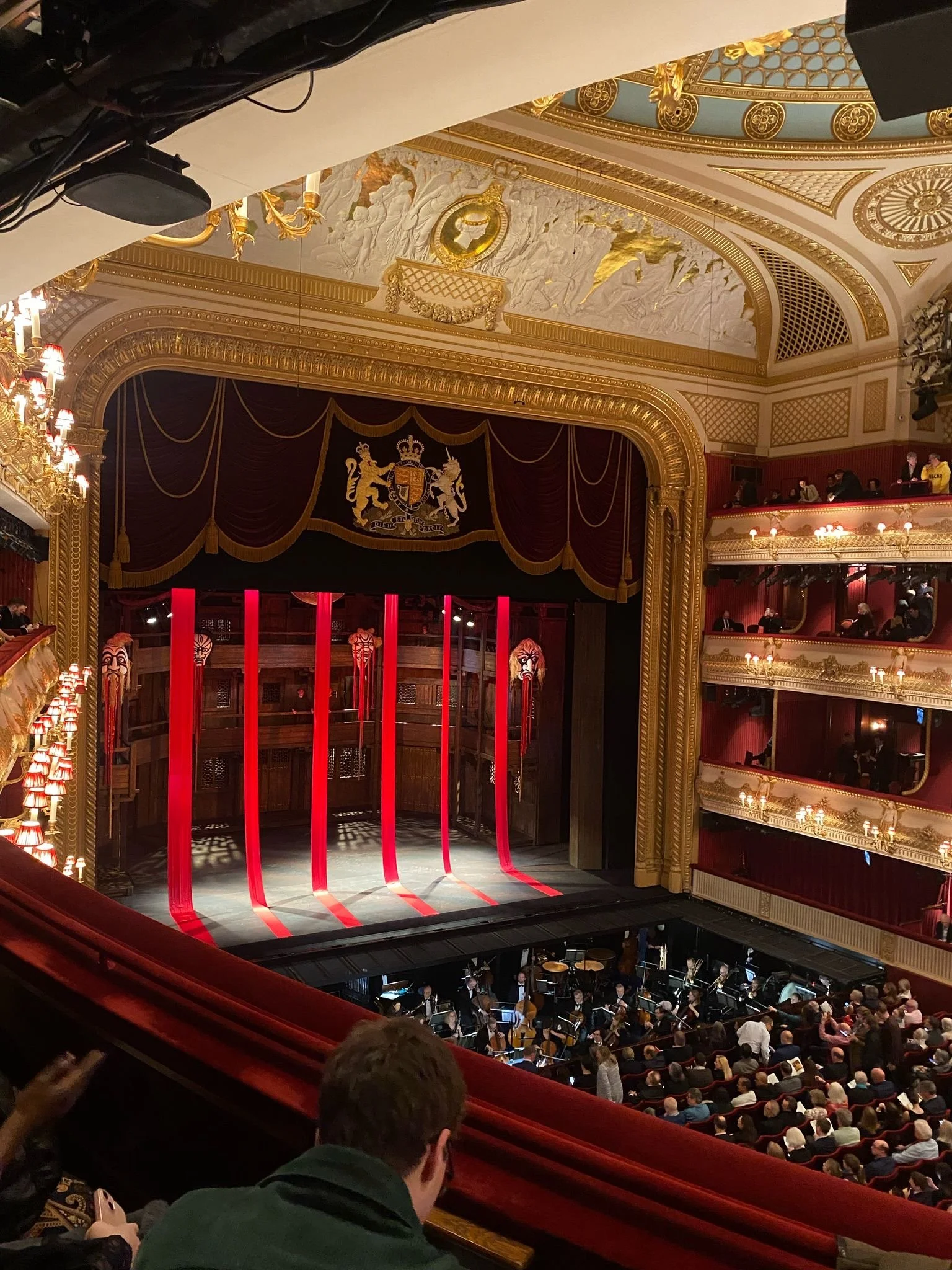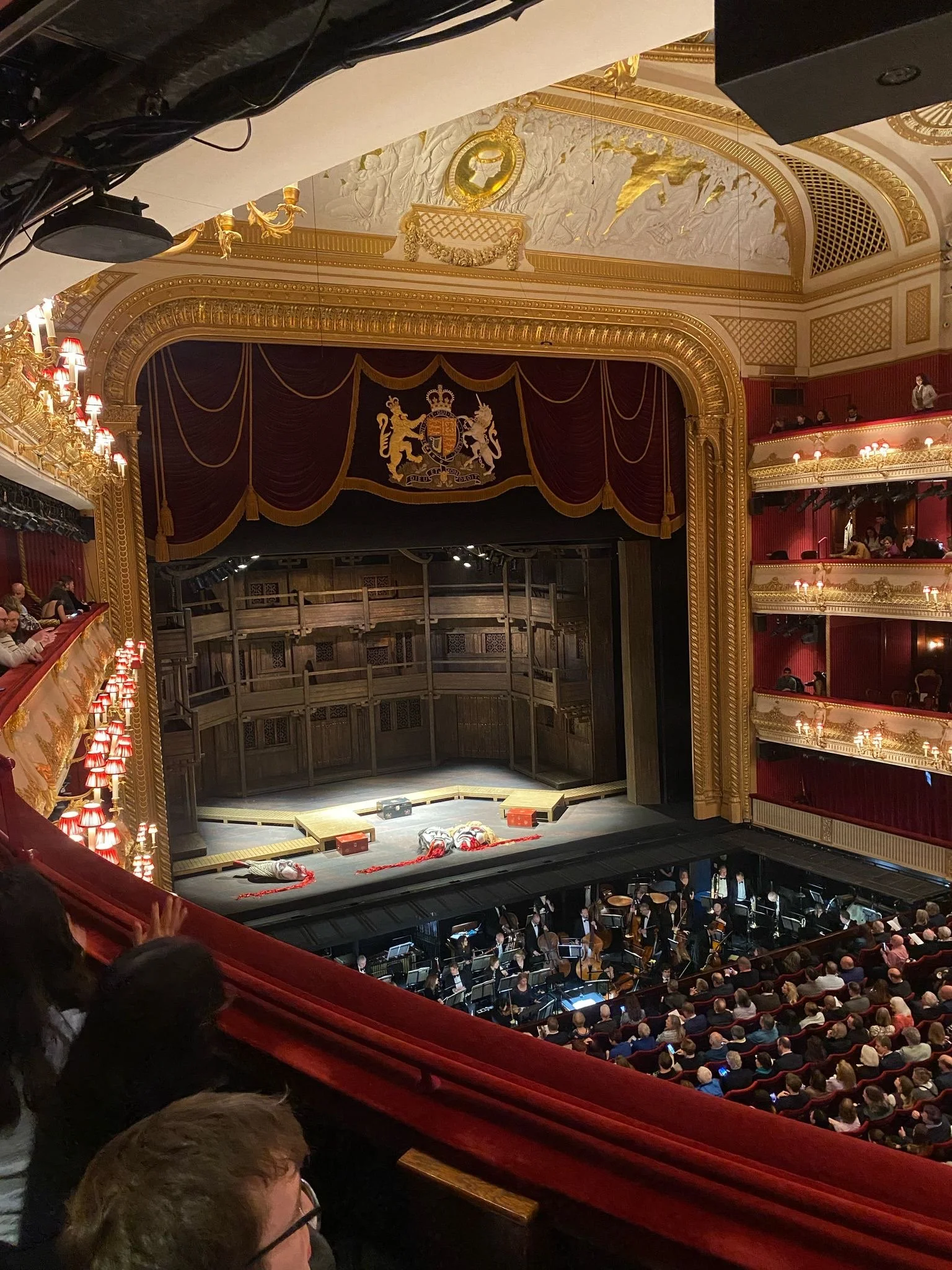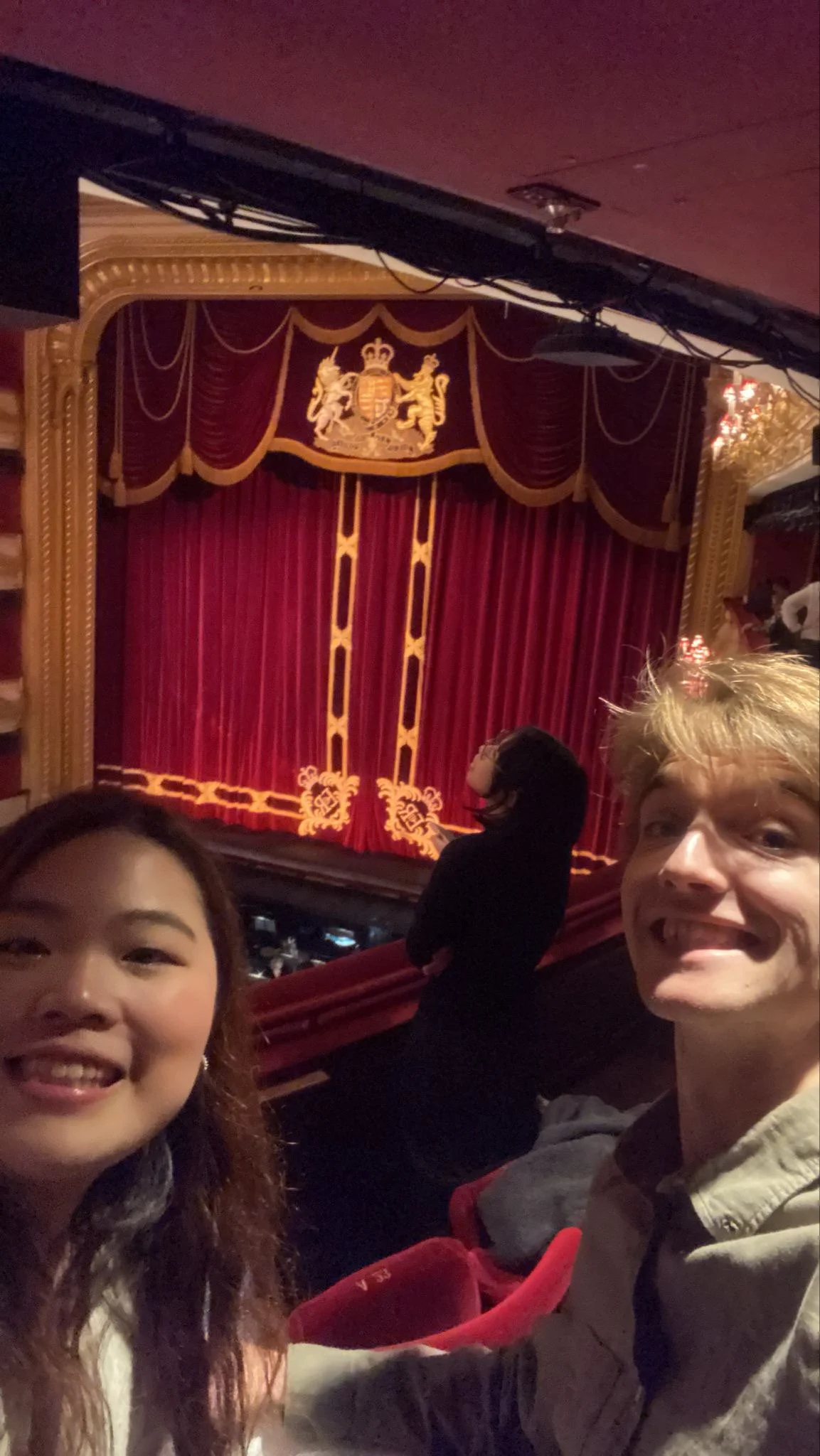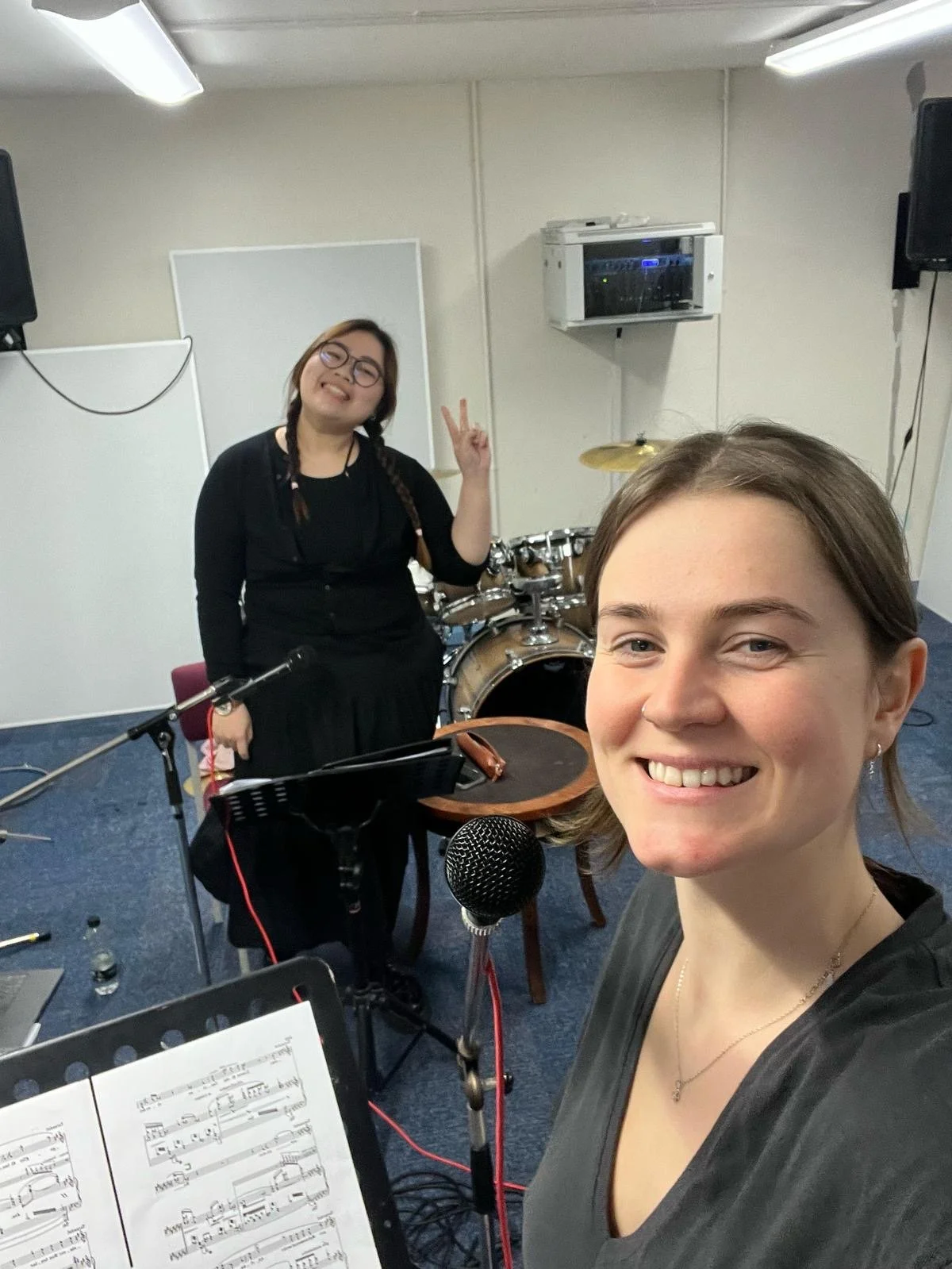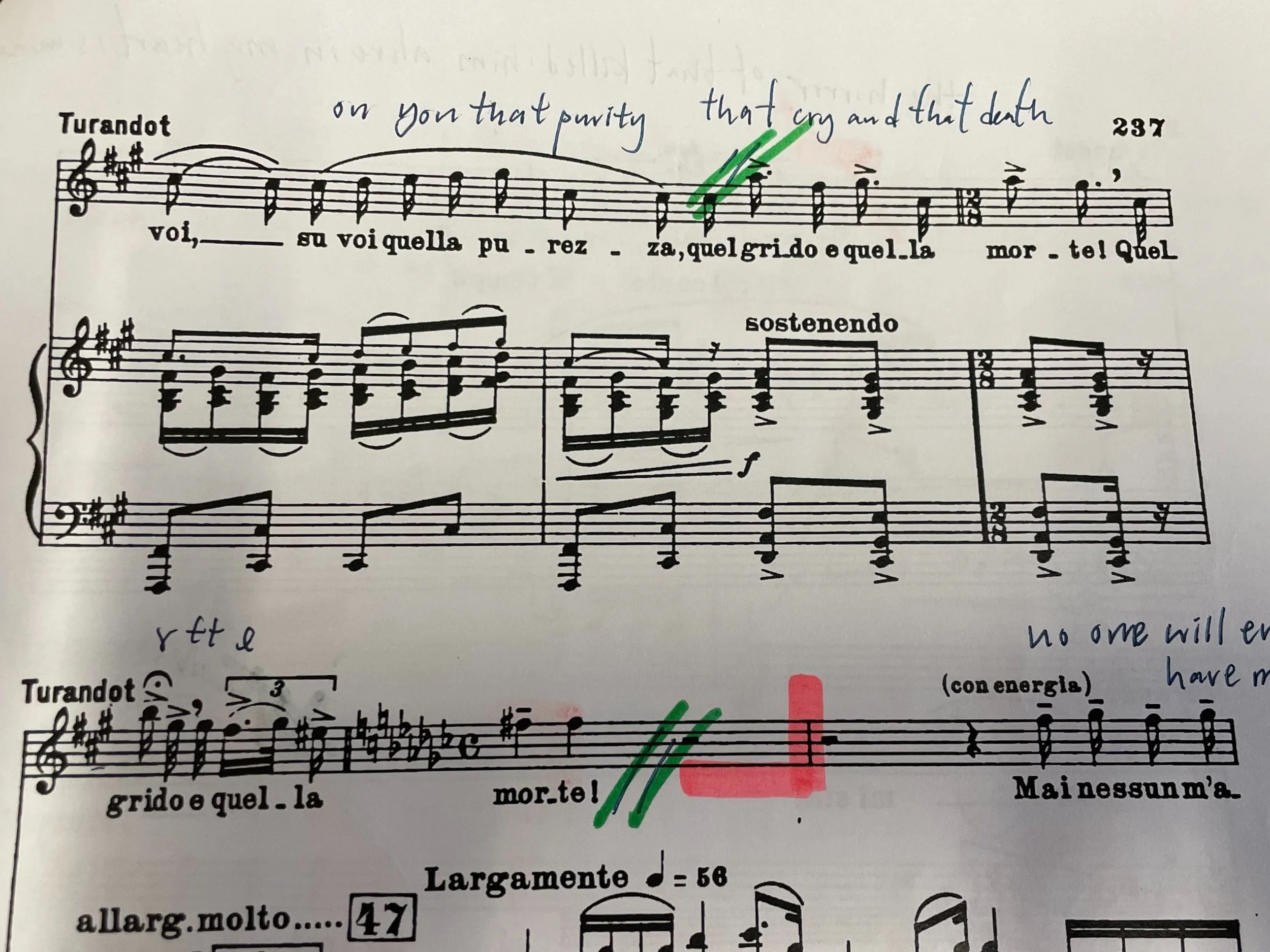Week 2: Some Thoughts about Turandot in the ROH & Jamming on the Turandot Theme
Turandot at the Royal Opera House
Date: 24th March, 2025
Time: 7:30pm
Venue: Royal Opera House
No one can argue about this, but the best place to study opera is obviously the opera house. So, here I am at the Royal Opera House (ROH) watching Puccini’s Turandot with my friend Benjamin Thorn who received a ticket from me as his birthday present. This trip kills two birds in one stone as I am also study the character of Liu for my dissertation project. One word can conclude my thoughts on the production, Spectacular. It is definitely not because of our friend, Matthew Brown’s parents involvement in that production nor biased by my adoration to Puccini’s music. The flourishing staging, the delivery of music and the delicacy of the singing that night is just spot on.
Coming to the opera house does not only allows me to familiarise the plot more, it also gave me new insights of the opera, especially on the Turandot’s character. (Unlike Ben and Matt who only focused on SeokJong Baek’s Nessun Dorma out of the entire opera) In preparing for this project, I have familiarised myself on Birgit Nilsson’s Turandot very well. Therefore, when Sondra Radvanovsky, the Turandot of the night, starts singing, it really caught me by surprise with the lighter timbre in her voice compared with Brigit’s. It almost felt like Maria Callas’s version of Turandot, something that sounds wrong to me. Her voice doesn’t come across to me as a good fit of Turandot’s “block-of-ice“ character. I seems to have preferred a voice with a voice a richer timbre and the affect the voice for a character as impermeable as Turandot. Hence, also projects Nilsson’s legacy and the uniqueness of her singing. Don’t get me wrong though, Radvanovsky is still a fabulous opera singer and her ability of singing “In questa reggia” at this standard is very admirable but I guess it never hurts if you don’t compare. At the same time, we also have to understand that there isn’t many singers in this world born with such a rich voice as Nilsson’s do.
This trip really makes me think. It makes me understand that even if I include all the Nilsson’s well-know role in the projects, there could be a chance I am still presenting very distinctive roles from different opera rather than alluding my project towards Nilsson. What we want is not a combination of lines from Turandot, Isolde, Electra and the rest of them, but the way that Nilsson performs those roles which makes the prominent figure in the opera cannon.
Meeting with Genie
Date: 25th March, 2025
Time: 4- 5:30pm
Venue: Pats Pa 11
Our meeting this week is slightly different from the previous ones that we have done. The meeting take place during the lecture time and our lecturer Dr. Tom Armstrong will be come in and out and making note on our meeting so that he can provide us some feedback towards the end of the lecture. With all the set-up, this section is really only an hour long.
Our main focus this week is on In questa reggia from Puccini’s Turandot. (Absolutely not because I have bias on Puccini and I have watched Turandot in the Royal Opera House the day before the meeting). In this section, we intended to withdraw any use technological modifications and enhancement to start with so that we can understand more the potential of each other’s voice. We hope not to not rely technology in producing effects if we are capable to it ourselves. Technology are only present there for us as an option to push beyond our ability further, rather than a excuse for us to do anything mediocre and having the technology fit in the gaps. I have extracted three melodic lines from the music as possible materials to work with Genie, shown below:
Audio link for desktop users: https://drive.google.com/drive/folders/1RpH5RSIoK0cPtZ3-1JjRpzsZ3pC3HSra?usp=drive_link
Theme 1
We started off our improvisation of the day with this sequential passage from In questa reggia, this is a good start with for the day and a very good passage to improvise on. Listening back to this when I am writing, I noticed my approach on improvising are rather conservative, most of the time of preserve the contour of the original of passage but presented it a rather fragmented matter or in different octaves. In comparison, Genie is more comfortable to explore the melody more that I do. It is not until around 4:14 that I started to play with textures by repeated staccato notes. The singing style that I Genie and I took are rather similar throughout which seems to be a bit compromised and tedious. It really like the part at 6:56 that we started to interact with each other through our singing, which I found quite special.
Theme 2
After our first attempt, we moved to another fragments that I extracted for the piece showed above. This fragment is the gist of the opera. Suggesting Calaf will need to solve riddle in order to win over Turandot but he only have one life. Any wrong answer to the riddle will take his life. In this track, I took a further fragmentary approach on the musical materials and Although I still have the tendency on stick to the original material but I somehow managed inserted aded notes, that can be heard at 2:54 and another flourishing one at 3:10. The call and response that Genie and I did at 2:29 and the prolonged minor 2nd clash at 2:48, shown our progression on improvising collaborative together. It is obvious that Genie and I connects more from the previous section and we are more comfortable and confident on the clashing. We hold on the clash to accentuate the dissonant. At 3:56 I also played with my low register, as you can hear that both Genie’s and my singing tesitura are quite high, having the lower octave provide more variety to the sonic experience and also features the register I am able to sing. When I was reviewing this track, I found it very interesting as I clearly remembered that I demonstrated this fragment to Genie in an operatic singing style that day. Genie and Tom, our lecturer who was in the room observing the meeting was blown away with it. However, the operatic styles does not shows its appearance at this improvisatory section at all. I asked myself why. The only reason that I can think of that is different to my practice is the involvement of the microphone. Having the microphone in front of me makes me more cautious on my singing as I don’t want to blow off the microphones but at same this led to a comprised singing style hence I absent of my the prominent element of my practice.
Theme 3
This third improvisation attempt work on this fragment that goes across the page. In at the start of this attempt, Genie proposed that we used take a radical approach on the use of timbre and texture in this section. Therefore, as what Csikszentmihalyi suggested, we can notice a lot of interesting things happened when you let go your self-consciousness. (Csikszentmihalyi, 1996, 123) The exploration of the timbre and texture ( the use of nasalised and airy sound) definitely provide more vibrancy to the section. Genie and I prolonged more on the dissonance at 0:16, demonstrating more familiar with between ourselves. More eye contract and physical communication took places during section enhance the synchronicity, which resulted in several time simultaneous cut offs. The overlapping between our voice at 4:19 is absolutely splendid. It also seems to me that I am more confident varying the theme in this improvisation section. At 5:22, I started off an rhythmic variation of the theme and persisted that til the end of the section. At 6:41, joins in the rhythmic patterns and we gradually conjoint into one and close off the section naturally.
Reviewing these improvisation tracks allows me to learning my initial approach in these sections. It helps me to identify good elements that I took in a section and qualities I can take into account more in the future. I know that I am a quick learner. Through acknowledging areas that I need to work on, I am certain that I can take action accordingly in a short period of time so that I can be more adventurous and confident in future improvisation practice and then excel in the performance. One general elements that I think both Genie and I can work on is to repeat more on extra elements that we come up with. From the three section that we did in meeting, we rarely repeated on variations on the theme that we come up with or elaborate it further on. This has improved between sections but generally things really just come and go. I don’t think this approach would make an effective sonic experience as it reasonable to say people, espiecially non-trained musician, will just forget what they heard if they hear the line once. For the audience to remember what they heard, repetition is the prerequisite like every other successful piece of music in the world despite the genre and style. It might be worthwhile for us to think about repetition in our practice sections so that we can master that in our final performance.
Feedbacks for tutor
After the section, Tom also gave us some feedback on our attempts on stuff that he has observed during the section. He suggested, as what I have mentioned in my review of the track, that it might be worth for Genie and I to highlight more the difference between our singing styles, the light Folk and pop voice in contrast with the heavy operatic voice. Another thing that Tom suggested is to actively listening to each other so that we will respond and interact with care. This will enables us to bring in a more intended and cohesive sonic experience rather than we accidental make something nice.
Reference List:
Csikszentmihalyi, M. (1996) Creativity: Flow and the Psychology of Discovery and Invention. New York: Harper Collins.
